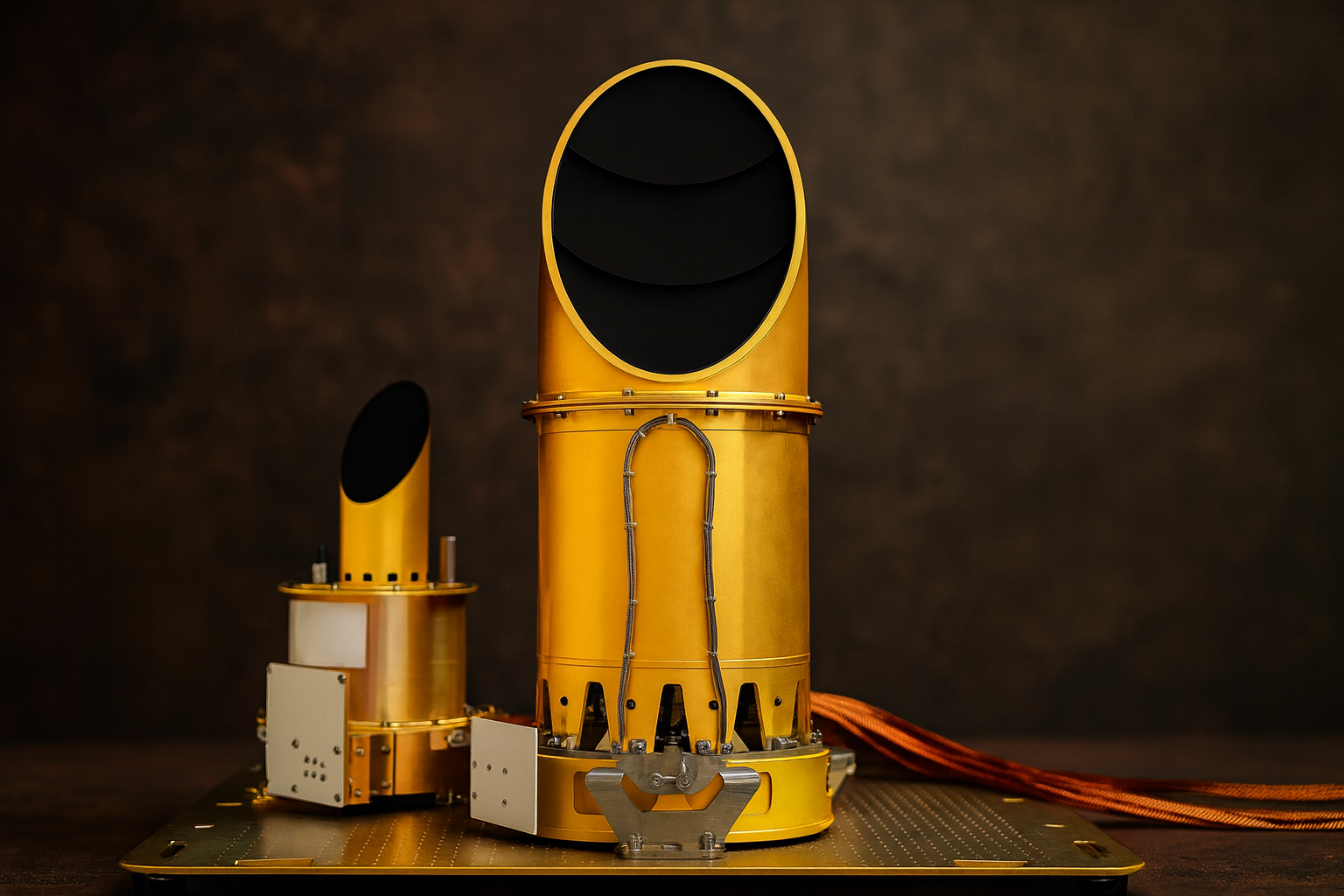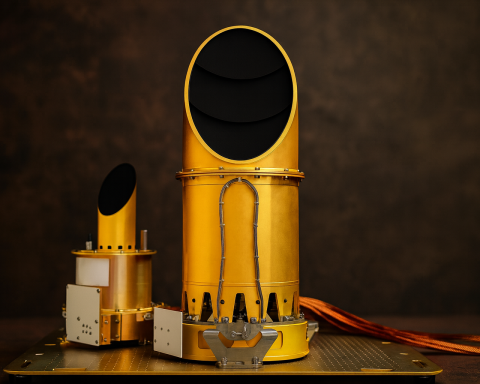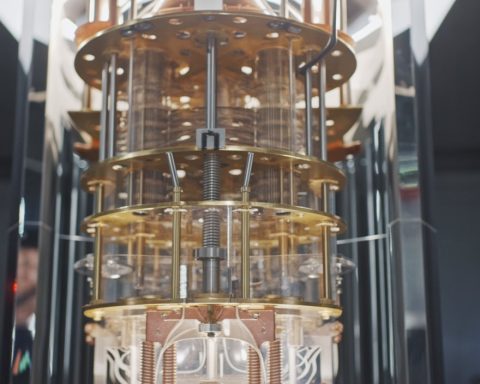Is the first trillionaire going to be an asteroid miner? Many believe so – even a U.S. senator famously predicted “the world’s first trillionaire will be made in space.” cruz.senate.gov The reason: asteroids are loaded with precious resources. A single metal-rich asteroid like 16 Psyche, now being explored by NASA, has been speculatively valued at $10,000 quadrillion – far more than the entire global economy earth.com. These space rocks contain abundant metals (platinum, nickel, cobalt, gold and more) and even water ice that could be turned into rocket fuel. In theory, a small asteroid might hold more platinum than has ever been mined on Earth. No wonder asteroid mining is dubbed the “cosmic gold rush.”
Not long ago, asteroid mining was pure science fiction. But today in 2025, the idea is moving toward reality. Several ambitious startups and national space agencies are developing the technology to find, reach, and extract resources from asteroids. Recent missions have already grabbed samples from asteroids and returned them to Earth, proving it’s possible to rendezvous with these spinning space rocks and scoop material legistorm.com. In the past year alone, there have been major breakthroughs: a Chinese probe launched to snag asteroid samples, a U.S. startup got the first-ever license for a private deep-space mining mission, and NASA began exploring a metal asteroid up close. The field that went bust a few years ago is roaring back – “the field has exploded in interest,” as one expert observes undark.org.
This report will dig into the science and technology behind asteroid mining, introduce the key players (from bold companies to space agencies), review major missions and milestones, and examine the economic, legal, and ethical dimensions of this emerging industry. We’ll also highlight current news (2024–2025) – the latest missions, partnerships, and expert perspectives (with some direct quotes) – to capture how asteroid mining is shifting from fantasy to the next frontier of commerce.
The Science and Technology Behind Asteroid Mining
Asteroid mining is hard. These missions demand cutting-edge spacecraft engineering, advanced robotics, and novel extraction methods suited for the zero-gravity vacuum of space. Here’s a look at how it works:
Spacecraft and Mission Design: Reaching an asteroid requires specialized spacecraft capable of deep-space travel and gentle rendezvous with a moving object. The spacecraft must match the asteroid’s orbit and then hover or land in microgravity, a tricky feat since asteroids have weak gravity and uneven terrain. NASA’s OSIRIS-REx and JAXA’s Hayabusa probes proved it’s possible – they navigated to near-Earth asteroids Bennu and Ryugu, touched the surface, and collected a few ounces of material en.wikipedia.org. Future mining craft will build on these designs with anchoring mechanisms or “sticky” landing pads to attach to a rock that barely pulls you down. For instance, private company AstroForge’s upcoming missions involve one probe to orbit a target asteroid and survey it, followed by a larger lander that will magnetically dock with the asteroid’s surface mining.com (useful if the asteroid has high metal content).
Robotics and AI: Because of the communication delays and complex tasks, asteroid mining will rely heavily on robotics and artificial intelligence. Uncrewed spacecraft need robotic arms, drills, or possibly rovers to move around an asteroid and gather material. One prototype, the six-legged SCAR-E robot (built by Asteroid Mining Corp and a Japanese university), is designed to crawl in microgravity, take samples, and survey an asteroid’s surface undark.org. Such robots must handle ultra-low gravity: if you push against the ground, you could float away, so tools might need gentle touch or tethering. AI will be critical for autonomous navigation and decision-making. By the time a signal travels from Earth, a mining bot might have already needed to adjust to a boulder in its path. Companies are testing AI-guided systems – for example, AstroForge has simulated an “Asteroid AI” to help a spacecraft lock onto its target during final approach undark.org. In short, smart robotic miners will do the dirty work while humans supervise from millions of kilometers away.
Extraction Methods: Traditional mining techniques won’t work in space – there’s no atmosphere, and gravity is negligible. Innovative approaches are in development. One promising technique is “optical mining,” which uses concentrated sunlight to fracture and vaporize asteroid material inside an inflatable bag nasa.gov. The idea, pioneered by TransAstra Corporation with support from NASA, is to enclose a small carbon-rich asteroid in a heat-resistant bag and focus sunlight (or lasers) onto it. The intense heat can drill into and break up the rock, releasing volatile substances (like water vapor) which are then captured by the enclosure leonarddavid.com. In tests, this method successfully liberated water from a simulated asteroid and trapped it with a cryogenic system leonarddavid.com – essentially turning a space rock into a fuel factory in situ.
For extracting metals, other techniques are being explored. One concept is to crush asteroid regolith (loose rock/soil) and use magnets or electrostatic forces to separate precious metals. Another is deploying swarms of small mining bots – some might dig or drill, others might melt portions of metal-rich asteroids and siphon off the molten alloy. Because asteroids lack air, there’s no risk of oxidation (no rust), but working in vacuum and extreme temperatures is challenging. Researchers are even studying the idea of using asteroid material itself as tools – e.g. using asteroid rock as reaction mass for propulsion or 3D-printing parts from asteroid metal. Water extraction is a top priority since water can be split into hydrogen/oxygen for rocket propellant. It turns out many asteroids (especially carbonaceous types) contain hydrated minerals or ice. Simply heating the material can drive out water vapor, which could then be condensed and stored. This was demonstrated on a lab scale and is much easier than extracting solid metals.
Communications and Power: A mining outpost would need a robust communication link to Earth, especially for sending data about what it finds. Just recently, the U.S. FCC granted the first-ever commercial deep-space communications license to AstroForge for its asteroid mission space.com – a landmark that lets a private craft talk to Earth from beyond 1.2 million miles away. Power is another hurdle: solar energy weakens with distance, so mining craft near Earth might use solar panels, but farther out they could need advanced power sources (next-gen solar concentrators, nuclear batteries, etc.). Asteroids don’t conveniently have sunlight 24/7 (they rotate), so engineering reliable power and storage is crucial.
In short, the technology of asteroid mining is a mix of space-age robotics, creative engineering, and even a touch of science fiction. Each piece – from autonomous spacecraft to novel extraction hardware – is falling into place through active R&D. The next section looks at who is driving these innovations.
Key Players in the Asteroid Mining Push
A decade ago, asteroid mining was spearheaded by a couple of visionary startups that ultimately faltered. But in 2024–2025, a new wave of players has emerged – both private companies and government agencies – energized by better tech, lower launch costs, and clearer legal footing. Let’s meet the key players:
Private Companies Leading the Charge:
- AstroForge (USA): Founded in 2022, AstroForge is currently the most advanced private asteroid mining venture mining.com. Their goal is to harvest platinum-group metals from near-Earth asteroids and bring them to market. In April 2023, AstroForge launched a test cubesat (Brokkr-1) to low Earth orbit, carrying a prototype refinery loaded with simulated asteroid ore space.com. The tiny craft ran into glitches – the refinery couldn’t be fully activated in microgravity – but it taught the team valuable lessons space.com. Undeterred, AstroForge has planned a series of ever-bolder missions: Odin, a 100-kg spacecraft slated to launch in January 2025, will rendezvous with a near-Earth asteroid and photograph its surface space.com. It won’t mine yet, but if successful Odin will prove the ability to reach and survey a target. Later in 2025, Vestri – about twice as large – is scheduled to launch and attempt the first private landing on an asteroid, using magnetic feet to dock onto the metal-rich surface mining.com. A fourth mission later on would actually extract and return metals mining.com. Notably, in late 2024 AstroForge secured an FCC license to operate beyond Earth orbit – the first-ever commercial deep-space license, establishing precedent for private missions outside Earth’s vicinity mining.com. AstroForge’s CEO Matt Gialich acknowledges the challenges but remains bold, saying “This has to happen… and I just hope that we’re the first.” undark.org
- TransAstra (USA): TransAstra is developing the tools to find and mine asteroids, focusing especially on extracting water for in-space fuel. They’ve built astrodetection telescopes (like their Sutter telescope system) to scout for small near-Earth asteroids undark.org. TransAstra’s most novel contribution is the optical mining technique described earlier – using concentrated sunlight to mine volatiles. The company, led by Dr. Joel Sercel, successfully tested this method with NASA support: in a 2015 demo at White Sands, a solar concentrator drilled into a vacuum-chamber “asteroid” simulant, releasing water which was captured in a cold trap leonarddavid.com. Sercel sees asteroids as an “unlimited resource for our species” and envisions them as “stepping stones to space for exploration, industrialization, and settlement” leonarddavid.com. TransAstra is also working on spacecraft concepts like Mini Bee and Queen Bee – asteroid harvesters that would bag small asteroids and extract resources – and has received NASA grants to advance these ideas. While they haven’t flown a mission yet, TransAstra is a key player on the tech development front.
- Karman+ (USA): A Colorado-based startup, Karman+ (pronounced “Karman Plus”) aims to go straight for an asteroid by 2026. The company is designing an experiment to land on an asteroid and test excavation equipment in situ undark.org. Little public info is available yet (they are likely in stealth mode), but they have attracted venture funding as part of this new cohort of asteroid miners undark.org. Karman+’s bold approach of an on-asteroid demo suggests confidence that the basic flight and rendezvous steps can be managed with existing commercial technology by then.
- Asteroid Mining Corporation – AMC (UK): Based in the UK, AMC is taking a longer route, focusing on developing robotics and interim revenue streams. They partnered with Tohoku University in Japan to build SCAR-E, a six-legged robot designed for asteroid surface exploration undark.org. SCAR-E can crawl and collect samples in microgravity conditions. Instead of rushing to space, AMC plans to use SCAR-E for Earth-based jobs (like inspecting ship hulls) to earn money while perfecting the tech undark.org. Their CEO, Mitch Hunter-Scullion, learned from earlier failures that “money runs out, investors get tired” if you have no revenue undark.org. His philosophy: “unless you’ve built something that makes sense on Earth, you’re never going to be able to mine an asteroid.” undark.org. AMC does have space ambitions: they eye a Moon soil analysis mission in 2026 as a stepping stone undark.org, and ultimately asteroid mining thereafter.
- Origin Space (China): Often called China’s first asteroid mining startup, Origin Space has begun testing technologies in orbit. In 2021, they launched a small satellite named NEO-1 to low Earth orbit, which successfully demonstrated the concept of capturing objects: it released a small target object and then recaptured it with a net – simulating catching a piece of asteroid space.com. The same year, they launched Yangwang-1, an optical space telescope, to hunt for near-Earth asteroids and map potential resources space.com. Origin Space’s goal is to create a “treasure map” of resource-rich asteroids and eventually send missions to mine them. They even announced plans for a NEO-2 mission to the Moon. As a private company aligned with China’s national goals, Origin Space is showcasing China’s growing commercial space sector.
- (The Pioneers – Planetary Resources & DSI: No discussion of asteroid mining players is complete without mentioning the pioneers. Planetary Resources (founded 2012, backed by tech billionaires) and Deep Space Industries (DSI) (founded 2013) sparked the first wave of interest. They planned swarms of small prospectors and space telescopes to identify asteroids, and envisioned mining water to supply space fuel depots. Both made some progress – Planetary Resources launched test satellites like Arkyd-6 in 2018, and DSI tested a water-based thruster in orbit – but neither reached an asteroid before running out of funding. By 2018, Planetary was acquired and pivoted away from mining, and DSI was acquired in 2019 mining.com. Their legacy, however, set the stage for today’s players, and many of their alumni and ideas live on in current projects.)
Major Space Agencies and Government Programs:
- NASA (United States): The American space agency is not commercially mining asteroids, but it has been the vanguard in developing the needed capabilities and supporting private efforts. NASA’s OSIRIS-REx mission achieved a huge milestone in 2023: it returned a capsule with 4.29 ounces (121.6 grams) of asteroid Bennu material to Earth astrobiology.com – the largest asteroid sample ever collected. This proved NASA’s ability to operate a spacecraft around a small asteroid, perform a touch-and-go sampling maneuver, and deliver extraterrestrial materials home. Beyond OSIRIS-REx, NASA in October 2023 launched the Psyche mission to rendezvous with 16 Psyche by 2026 – the first mission to a metal-rich asteroid (thought to be the exposed nickel-iron core of a proto-planet) earth.com. While scientific in purpose, Psyche will yield valuable data on an asteroid literally made of metal – data that could inform future mining of similar asteroids. NASA also runs the NEO Surveyor program to map near-Earth objects, which aids in finding viable mining targets. On the policy side, NASA has actively encouraged resource utilization: in 2020 it offered to purchase small amounts of lunar soil from private companies as a legal demonstration, implicitly supporting the idea that private entities can own what they extract. NASA’s admin Bill Nelson has highlighted the importance of asteroid missions “improving our understanding of asteroids that could threaten Earth while giving us a glimpse into what lies beyond” nasa.gov – underscoring dual reasons: planetary defense and resource potential.
- CNSA (China): China’s national space agency is rapidly catching up in asteroid exploration. In May 2025, China launched the Tianwen-2 mission, its first attempt to retrieve asteroid samples reuters.com. Tianwen-2 is en route to the near-Earth asteroid 469219 Kamoʻoalewa, a tiny quasi-moon of Earth about 40–100 meters wide reuters.com. The spacecraft will spend roughly a year cruising to intercept the asteroid in 2026, attempt a landing and sample collection, then send a capsule of rocks back to Earth in 2027 reuters.com. If successful, China will become the third nation (after Japan and the U.S.) to bring back asteroid material reuters.com. And Tianwen-2 doesn’t stop there – after sampling the asteroid, it is slated to visit a second target, a main-belt comet, demonstrating versatile resource exploration. China is also investing in related tech (for example, discussing asteroid deflection missions and encouraging companies like Origin Space). The Chinese government clearly sees space resources as part of its long-term space strategy, with official statements hinting at mining asteroids for metals and fuel as part of developing a space economy.
- JAXA (Japan): Japan’s space agency JAXA has led the world in asteroid sample returns. Hayabusa (2005–2010) was the first mission to bring back asteroid dust (tiny grains from asteroid Itokawa), and Hayabusa2 (2014–2020) returned about 5.4 grams of material from asteroid Ryugu en.wikipedia.org. These were scientific missions, but they proved out many techniques crucial to mining – pinpoint navigation, surface touchdown in low gravity, even blasting a crater (Hayabusa2 shot a small copper bomb into Ryugu to expose subsurface material!). JAXA’s leadership inspired others and provided invaluable data on asteroid composition. Japan has also partnered with NASA (they contributed instruments to OSIRIS-REx and will get a share of Bennu’s sample). While JAXA doesn’t have a commercial mining program, the knowledge from its missions is a foundation that companies can build on.
- European Space Agency (ESA): Europe is eyeing space resources mostly in the context of the Moon, but it hasn’t ignored asteroids. ESA’s upcoming Hera mission (launching 2024) will rendezvous with the asteroid Dimorphos in late 2026 – this is actually a follow-up to NASA’s 2022 DART mission that intentionally crashed into Dimorphos. Hera will survey the crater and measure the asteroid’s properties reuters.com. Although Hera is about planetary defense, the experience of operating around a small asteroid and possibly deploying mini-probes to its surface (CubeSats that Hera carries) is directly relevant to mining tech. ESA also has technology programs for in-situ resource utilization and even hosted competitions like the “Space Resources Challenge” to develop robotic prospectors. Notably, Luxembourg, an ESA member state, has become a hub for space mining research – the Luxembourg government launched a Space Resources initiative in 2016, invested in U.S. asteroid companies, and set up the European Space Resources Innovation Centre (ESRIC) to incubate new tech. Several European startups (e.g., Germany’s Isar Aerospace in rockets, or UK’s AMC as noted) tie into this ecosystem.
- Others: Several other nations have dipped toes into asteroid mining prospects. The United Arab Emirates (UAE) passed a law in 2019 allowing space resource ownership and has expressed interest in asteroid exploration missions. Russia had proposed asteroid-grabbing missions in the past (and scientists there talk about mining platinum from asteroids), though none have materialized. Australia and Canada invest in research and have companies looking at off-world mining (often leveraging their terrestrial mining industries’ expertise in robotics and remote operations). And the nonprofit B612 Foundation in the U.S. (founded by astronauts and engineers) has focused on asteroid detection via its Asteroid Institute and Asteroid Discovery Analysis tools – while not mining, its work on finding near-Earth asteroids indirectly supports the resource hunt by cataloging targets.
In summary, the playing field is a mix of bold startups (mostly U.S. and allied countries) seeking to make profit from asteroids, and major national agencies demonstrating the required capabilities and creating partnerships. After some false starts, momentum is building. As one CEO quipped, asteroid mining takes a special kind of optimism – “Not a lot of humans are built to work like that” undark.org – but those who are, have now gathered the capital and knowledge to truly try. The next section outlines the key milestones that brought us to this point.
Major Milestones and Missions in Asteroid Mining
From the first asteroid rendezvous to recent private missions, each milestone has been a stepping stone toward mining. Below is a timeline of significant events and achievements on the road to asteroid resource utilization:
- 1990s – Early Reconnaissance: NASA’s Galileo and NEAR Shoemaker missions became the first to fly by and orbit asteroids. In 1997, NASA’s NEAR Shoemaker probe arrived at asteroid Eros, and in 2001 it even performed a soft landing on Eros – the first landing on an asteroid en.wikipedia.org. This showed that we can physically reach and touch down on these bodies.
- 2005 – JAXA launches Hayabusa, the pioneering mission to bring back asteroid material. Despite numerous glitches, Hayabusa returned to Earth in 2010 with a tiny bit of dust from asteroid Itokawa, marking the first asteroid sample return in history.
- 2012 – The First Private Ventures: Two U.S. startups, Planetary Resources and Deep Space Industries, announce plans to mine asteroids. Backed by high-profile investors and visionaries, they sparked huge media interest. Planetary Resources launched a small test telescope (Arkyd) to orbit and developed prospecting plans, while DSI worked on water-based propulsion. These companies also pushed for legal clarity (which came in 2015). Though neither succeeded long-term, they legitimized asteroid mining as a serious goal mining.com.
- 2015 – Legal Green Light: The United States passes the Commercial Space Launch Competitiveness Act (Space Resource Exploration and Utilization Act) affirming that U.S. citizens can own resources they extract from space, including asteroids legistorm.com. This law explicitly directs the government to facilitate commercial recovery of space resources legistorm.com. It was a watershed moment, removing a major uncertainty for investors. (Luxembourg would follow with a similar law in 2017, and other countries like UAE and Japan later introduced laws or guidelines permitting space mining undark.org.)
- 2016 – The tiny asteroid Ryugu is identified as Hayabusa2’s target; Luxembourg formally launches its SpaceResources.lu initiative, committing funds to space mining research and startup investments. Meanwhile, NASA begins developing the Asteroid Redirect Mission (ARM) – a plan to haul a small asteroid or boulder into lunar orbit for astronauts to visit, which, though eventually canceled in 2017, drove technology advances (like new ion engines and capture mechanisms) that could be repurposed for mining.
- 2018 – Changing of the Guard: Planetary Resources is acquired and exits the asteroid business, and Deep Space Industries is acquired by a space tech firm (Bradford Space) mining.com. The first generation of asteroid miners winds down, even as interest shifts toward the Moon (with talk of mining lunar ice). But on the scientific front, NASA’s OSIRIS-REx arrives at asteroid Bennu (August 2018) and begins detailed mapping – revealing Bennu’s surface is rich in carbonaceous material and free-flowing gravel.
- 2019 – A Striking Demonstration: In April, Hayabusa2 drops an explosive charge on Ryugu, creating an artificial crater – the first subsurface sampling of an asteroid. This dramatic feat proved we can excavate asteroid material (albeit for science). That same year, a group of researchers proposes reserving part of the solar system as a protected “wilderness” to preempt runaway space mining impacts undark.org, showing that the ethics of space mining are being seriously considered even before it begins.
- 2020 – Harvests Returned: December 2020, JAXA’s Hayabusa2 returns its sample capsule to Earth, delivering 5.4 grams of Ryugu dust en.wikipedia.org. The world sees pristine asteroid pieces – rich in organic compounds and water-bearing minerals – offering a tantalizing hint that asteroids hold not just monetary riches but clues to life’s origins. Also in 2020, NASA selects four small companies in a pilot program to collect a few scoops of lunar dirt in the future for token payments, implicitly forging a precedent for off-world resource contracts undark.org.
- 2021 – Chinese Private Launch: Origin Space launches NEO-1 (asteroid capture test) and Yangwang-1 (asteroid survey telescope) in early and mid-2021 space.com, marking the first known commercial asteroid-related satellites in China. This is also when startups like AstroForge and TransAstra in the U.S. begin to attract funding, riding on improved market sentiment (thanks to cheaper launch costs via SpaceX, etc.). A research study in 2021 also introduces an environmental impact assessment framework tailored for space mining projects undark.org – analogous to Earth’s environmental reviews – indicating the maturation of thinking around responsible mining beyond Earth.
- 2022 – Planetary Defense Meets Mining Tech: NASA’s DART mission slams into asteroid Dimorphos in September 2022, successfully altering its orbit. While a planetary defense test, DART (and the forthcoming ESA Hera follow-up) demonstrate human ability to physically interact with and move asteroids. The knowledge from this kinetic impact and the granular data Hera will collect in 2026 could inform future efforts to redirect asteroids for easier mining access (or to deflect ones that might be hazardous).
- 2023 – Sample Bonanza and New Missions: In September 2023, NASA’s OSIRIS-REx capsule lands in the Utah desert carrying a treasure: about 122 grams of material from Bennu astrobiology.com. Scientists reveal it contains high carbon and water content – building blocks of life – showing the scientific goldmine asteroids represent nasa.gov. This sample, the largest ever from space, will be studied for decades and also demonstrates technology that miners can use (e.g., OSIRIS-REx’s TAGSAM sampling mechanism). Just a month later, in October 2023, NASA launches the Psyche mission to a unique metal world, beginning a journey to directly study what could be a 140-mile-wide nickel-iron asteroid core earth.com. The media buzzes that Psyche could be “worth quadrillions” in metal value earth.com (though NASA’s interest is scientific). Meanwhile, private company AstroForge raises $13M, then $40M in funding rounds en.wikipedia.org, spacenews.com, announcing its intention to land on an asteroid by 2025. The race clearly is on.
- 2024 – Policy and Partnerships: By 2024, Japan and UAE have joined the U.S. and Luxembourg in enacting laws or official positions that support space mining rights undark.org. Internationally, discussions heat up: the UN’s Committee on Peaceful Uses of Outer Space forms a working group to discuss space resource governance undark.org, and The Hague Space Resources Governance Working Group releases building-block principles on how an international framework might work undark.org. On the industry side, late 2024 sees AstroForge receive an FCC license for its deep-space mission space.com, and companies like Karman+ and TransAstra secure more venture funding undark.org. NASA also establishes its Consortium for ISRU to coordinate research on using space resources (mainly lunar but relevant to asteroids too).
- 2025 – Active Missions Commence: In January 2025, AstroForge’s Odin mission is slated to lift off, becoming the first private spacecraft to go beyond Earth-Moon space with the intent to reach an asteroid mining.com. By mid-2025, China’s Tianwen-2 is on its way, heralding a new player in asteroid exploration with a complex double-mission reuters.com. Later in the year, AstroForge hopes to send Vestri to attempt a landing. Also expected around this time, NASA’s OSIRIS-REx (now renamed OSIRIS-APEX) will arrive at Apophis in 2025–2026, as that asteroid passes near Earth – turning a planetary defense target into a resource knowledge opportunity. By end of 2025, ESA should launch Hera. In short, as of 2025 we are in the thick of it: multiple missions from multiple nations and companies are en route to asteroids or actively preparing to launch.
This progression of milestones shows a clear trend: we have moved from proof-of-concept to implementation. Each success builds confidence that asteroid mining is not only feasible, but imminent. However, turning these achievements into an industry requires making economic sense of it all – which brings us to the economic and legal landscape.
Economic and Legal Aspects of Asteroid Mining
The allure of asteroid mining is deeply tied to economics – the potential value of resources – but realizing that value hinges on legal rights and frameworks. Let’s explore both:
Economic Potential: “Trillion-Dollar Rocks” – Why bother mining space rocks at all? In a word: resources. Many asteroids, especially certain types of near-Earth asteroids, are packed with materials highly valued on Earth and crucial for high-tech industries. Platinum-group metals (PGMs) are a prime target. These metals (platinum, palladium, iridium, etc.) are rare on Earth’s crust but relatively abundant in metallic asteroids (which are thought to be remnants of planetary cores). They are used in everything from catalytic converters to electronics and renewable energy tech. A single 500-meter asteroid rich in PGMs could contain tens of thousands of tons of platinum – by some estimates, worth trillions at current market prices youtube.com. Beyond precious metals, asteroids offer iron, nickel, and cobalt in quantities that could rival Earth’s largest mines, and without the environmental destruction of terrestrial mining. For example, asteroid 16 Psyche’s iron and nickel content has been whimsically valued at $10 quintillion earth.com, highlighting the abundance (though bringing that much metal to Earth would crash the market!).
Perhaps even more valuable in the near term is water. Water ice in asteroids (or water-bearing minerals) can be split into hydrogen and oxygen to make rocket fuel, or used directly to support life for crews. This has led to the idea of “space gas stations.” If asteroid-derived propellant can be made available in orbit (cheaper than launching all fuel from Earth), it would revolutionize space travel economics – enabling cheaper lunar missions, Mars missions, and beyond. A NASA study found that using asteroid water for an extended human exploration program could save tens of billions of dollars nasa.gov, potentially making currently “unaffordable” missions affordable. In essence, in-space resources reduce the need to lift everything from Earth’s deep gravity well, which is extremely costly.
Moreover, mining certain asteroids could provide rare materials for green technologies. As noted in one report, asteroids contain elements like cobalt (used in EV batteries) and tellurium or neodymium (used in solar panels and wind turbines). While Earth has these, increasing demand and environmental limits on mining make asteroid sources tempting in the long run. Space mining advocates argue that tapping extraterrestrial resources will both relieve pressure on Earth’s environment and supply the raw materials for a sustainable global economy undark.org. As an article in 2024 pointed out, “scraping in space… could cut down on the damaging impacts that mining has on this planet.” undark.org. If we can get platinum for clean energy fuel cells or heaps of nickel for batteries from asteroids, we might avoid tearing up more of Earth’s fragile ecosystems.
However, skeptics note that the economics are not so straightforward. Supply and demand: A giant influx of metals from space could crash commodity prices – the market value of these materials assumes their scarcity. For example, that oft-cited “trillion-dollar asteroid” wouldn’t actually yield a trillion dollars of profit; flooding the market would make platinum as cheap as aluminum. There’s also massive upfront cost to mining in space – billions in R&D and infrastructure – long before any saleable product is returned. Transporting material from deep space to Earth safely is expensive too (though proposals exist to process and use resources entirely in space, avoiding Earth re-entry unless needed). Some analysts believe the more viable market is in-space use of resources (like fueling spacecraft, building large structures in orbit using asteroid metals, etc.) rather than hauling everything back to Earth’s surface for resalelegistorm.com.
In recent years, investors have become cautious due to these uncertainties. The first wave of companies couldn’t convince investors of near-term returns. The new wave is partially addressing this by focusing on smaller asteroids (easier to reach), using rideshare launches to lower cost, and by aiming to produce high-value, low-mass products (like refined PGMs) that could justify return. They also eye nascent markets like supplying propellant to satellites or future space stations (which might pay a premium for not having to launch fuel from Earth). We are essentially waiting for the space economy to reach a scale where off-world mining makes economic sense. As of 2024, “the asteroid-mining market [is] currently $0, as no one has yet mined an asteroid.” undark.org. Companies are sustained by venture capital, government grants, and hope – but the first revenue will likely come when a customer (NASA? SpaceX? national space forces?) pays for space-derived material.
Legal Landscape: Ownership and Rights – Hand-in-hand with economic viability is the question: who has the right to these resources? The foundational international law is the Outer Space Treaty of 1967, which says no nation can claim sovereignty over the Moon or other celestial bodies. This has been interpreted to prohibit declaring an asteroid as your property (no planting a flag and saying “this asteroid is mine”). However, the treaty does allow the “use” of space, and there’s a gray area about whether extracting resources constitutes national appropriation or a permitted use legistorm.com. The U.S. and a few others argue that removing resources is like fishing the ocean – you don’t own the ocean, but you own the fish you catch. Based on this view, the U.S. passed its 2015 law recognizing private ownership of extracted space resources legistorm.com. Luxembourg’s 2017 law does similarly (even for companies not based there). In 2020, the U.S. also initiated the Artemis Accords, a set of bilateral agreements for countries participating in lunar exploration, which explicitly affirm that resource extraction is allowed in compliance with the Outer Space Treaty legistorm.com. Over 20 countries (including Canada, Japan, UAE, many in Europe) have signed on to these principles.
On the flip side, there’s the Moon Agreement of 1979, a lesser-known UN treaty that some nations signed, which calls space resources the “common heritage of mankind” and seeks an international regime to govern their exploitation. Notably, major spacefaring nations like the U.S., Russia, China, and even newer players have not signed the Moon Agreement legistorm.com. As of 2025, no global framework specifically for mining exists, though the topic is under active discussion. The United Nations COPUOS (Committee on Peaceful Uses of Outer Space) has set up a working group that in 2022–2023 met to discuss legal models for space resource activities undark.org. It’s a slow process, but eventually there may be guidelines or even a new treaty.
One idea being floated by legal scholars: a system where companies that extract resources pay a royalty or fee to an international fund, as a way to share benefits and acknowledge the common heritage principle cba.org. This would be somewhat akin to how the International Seabed Authority manages seabed mining on Earth’s oceans (though that system itself is contentious). For now, companies are proceeding under national laws like those of the U.S., which provides them some protection and regulatory certainty.
Another legal aspect is regulatory oversight: who licenses and supervises a private asteroid mission? Under the Outer Space Treaty, nations are responsible for the activities of their private entities and must provide “authorization and continuing supervision.” In the U.S., this role is evolving – currently a mix of FAA (for launch licensing), FCC (for communications – e.g., AstroForge’s license mining.com), and possibly NOAA for remote sensing. But a comprehensive framework is not yet in place. The U.S. is debating giving the Department of Commerce a broader regulatory role for novel space activities (like mining) legistorm.com. Clearer rules are likely forthcoming as the first missions push the envelope.
Finally, liability and safety: what if mining an asteroid alters its orbit and endangers Earth, or causes debris that damages other satellites? Under current law, the launching state would be liable for any damage caused by its space object. Companies will need to show they can mine responsibly without creating hazards. Part of the Artemis Accords includes commitments to share information and avoid harmful interference in others’ operations undark.org. There is also discussion of creating “safety zones” around operations to prevent conflict (not ownership, but an agreed keep-out zone for operational safety).
In summary, legally we’re in a frontier phase: countries like the U.S., Japan, Luxembourg have planted flags (figuratively) saying “go forth and mine, we’ll back you up domestically,” while the international community works toward consensus on how to manage this new activity so it’s fair and peaceful. The legal trajectory seems to be following how maritime or Antarctic resource issues evolved – slowly balancing freedom to use with safeguards and benefit-sharing. For companies, as of 2025 they operate with a degree of legal confidence (thanks to national laws), but everyone recognizes that true long-term success will likely require some international agreement to avoid disputes and ensure stability.
Environmental and Ethical Considerations
Mining asteroids might sidestep many Earthly environmental problems, but it introduces new ones – as well as philosophical ethical questions about how humanity extends its footprint into the cosmos. Here are key points on the environmental and ethical front:
Environmental Benefits on Earth: Advocates argue that space mining could be an environmentally friendly solution to resource scarcity. By obtaining critical minerals off-world, we could reduce destructive mining practices on Earth – saving landscapes, forests, and habitats from being bulldozed or strip-mined. As one expert put it, people see the trade-off clearly: “Scar the Earth or scrape an asteroid.” undark.org Many who oppose new mines in ecologically sensitive areas might prefer that we fetch resources from lifeless rocks in space instead. Additionally, using asteroid-derived fuel in orbit means fewer heavy launches from Earth, potentially cutting some rocket emissions in the long run. A 2022 public opinion study found that the general public is actually largely in favor of asteroid mining – more so than other unconventional mining like deep-sea or Antarctic mining – even among environmentally minded respondents undark.org. The idea of moving dirty industrial extraction off-world has a certain appeal to our sustainability conscience.
Environmental Impacts in Space: That said, space mining could produce its own mess if not managed. One issue is rocket emissions and energy use – mining ventures will require lots of launches (to send equipment, etc.), and currently rockets emit soot and CO₂ (though overall the space industry’s carbon footprint is tiny compared to global totals). Another concern is space debris and pollution. Blowing up or drilling into an asteroid could eject rock fragments into random orbits. “Extraction on space rocks would generate waste and debris, which would float out into the vacuum of space,” noted a 2024 Undark article undark.org. If an asteroid is broken apart, its pieces might become hazards to other spacecraft or even Earth (imagine inadvertently nudging a chunk onto a collision course). Responsible mining would likely require containing operations – for instance, using enclosures (bags or tents around the mining site) to prevent debris escape, and careful selection of targets that won’t endanger Earth if disturbed.
There’s also the cosmic environment to consider: while space seems vast and empty, some argue we shouldn’t just treat it as a free-for-all quarry. In 2019, researchers suggested setting aside much of the solar system (like 85%) as protected “wilderness” where we agree not to mine, to prevent a scenario of over-exploitation writ large undark.org. This is a radical idea, but it stems from a desire to avoid repeating a pattern of “grab everything until it’s gone” that has plagued Earth’s environment. Another group in 2021 proposed an environmental impact assessment (EIA) framework for space mining projects undark.org. They outlined factors such as how much dust a mining method would kick up, how it might affect scientific value of the body, etc., to score the environmental “damage” of a given plan. These kinds of concepts might inform future regulations – e.g., requiring an EIA for an asteroid mining license, analogous to how big projects on Earth need environmental reviews.
Scientific and Cultural Concerns: Some asteroids are extremely old – time capsules from the dawn of the solar system. Scientists treasure them for study. If we mine an asteroid to depletion, we might destroy a pristine scientific sample before it’s been fully studied. Ethically, this raises the question: do we have a responsibility to preserve some portion of these celestial objects for science and for future generations? It’s similar to debates over extracting resources in Antarctica or archaeological sites. There might also be cultural significance – for instance, some cultures value celestial objects differently, though asteroids haven’t featured in human culture as much as the Moon or planets (the Moon, interestingly, elicits more public attachment; people in surveys wanted it preserved more than asteroids, seeing the Moon as “visible, beautiful, and associated with purity and spirituality”undark.org).
Equity and Ethics of Access: Who gets to benefit from asteroid riches? If only a few wealthy corporations or nations gain the capability, there’s a fear of a space resource grab that could widen global inequalities. This is partly why some countries advocate the “common heritage” concept – to ensure all of humanity gains, not just those with the technology. There have been musings about establishing an international fund from space mining profits to distribute benefits more evenly or to invest in global good (similar to how seabed mining is supposed to share benefits, at least on paper) cba.org. Also, if space resources become pivotal to the economy, countries without access might be left dependent on those who do – a potential geopolitical tension. Ethically, many argue we should formulate rules now to avoid a Wild West scenario that leads to conflict or exploitation. The flip side is, if rules are too restrictive, they could stifle the innovation at this early stage. It’s a delicate balance.
Another ethical dimension: Planetary defense vs. mining profit. We have a shared interest in monitoring asteroids for Earth-threatening orbits. If companies start moving asteroids (for example, one concept is to nudge a small asteroid into a convenient orbit around the Moon for easier mining), there are safety implications. An accident could turn a benign rock into a hazardous one. The global community will likely demand stringent assurances and perhaps oversight over any asteroid-moving activities. Using resources in situ (without relocating the whole asteroid) might be more acceptable.
Interplanetary Environmentalism: As humanity expands into space, the notion of environmental stewardship might extend beyond Earth. Does an asteroid – a lifeless rock – deserve any “protection”? Some argue yes, especially if it has scientific value or if its untouched existence has intrinsic value. Others say resources are meant to be used – leaving vast riches floating unused while Earth suffers shortages would be irresponsible. A middle path might emerge where particularly unique or fragile objects (say, an asteroid that is actually a rubble-pile comet remnant, or one that’s the last of its type) are conserved, while plentiful generic ones are utilized.
Interestingly, public sentiment (as mentioned) is currently not a major roadblock. Unlike, say, genetic engineering or nuclear power, asteroid mining doesn’t spur the same fear or protests – likely because asteroids are remote and mining them doesn’t obviously hurt everyday people. In fact, as noted, people are more okay with it than other extreme mining undark.org. This could change if, for instance, a high-profile mistake occurs (imagine debris from a mining test damaging the International Space Station or something). But for now, ethical opposition is limited, and even environmental groups have been relatively quiet on asteroids (they’re more focused on Earth, understandably).
One should also mention the ethical imperative some space thinkers cite: that using space resources is key to ensuring prosperity for all without wrecking Earth. As space futurist Peter Diamandis said, “Mining asteroids will ultimately benefit humanity on and off the Earth in a multitude of ways.” brainyquote.com The ethos here is that expanding into the solar system can increase the pie of resources available to humanity, potentially lifting billions out of poverty if managed well (imagine plentiful rare materials for all the clean tech we need, or abundant construction material for space habitats, etc.). Of course, that’s a long-term and idealistic view – bridging it to near-term reality is the challenge.
In conclusion, asteroid mining holds promise for environmental sustainability (reducing Earth impacts) but comes with new environmental challenges in space that will need proactive mitigation. Ethically, it pushes us to formulate principles for how we treat the broader solar system – balancing use and preservation, and ensuring fair sharing of benefits. As one scientist remarked, this moment in history is akin to the age of exploration: we must decide carefully how to proceed so that “the next 50 years… are even more consequential and impactful than the last” cruz.senate.gov, in a positive way for all.
Recent Developments and News (2024–2025)
The past year or so has been especially eventful in asteroid mining. Here we highlight the major announcements, missions, and partnerships from 2024 into 2025 that signal the rapid progress in this field:
- AstroForge’s Breakthroughs: AstroForge made headlines by securing a U.S. FCC license in late 2024 for its upcoming deep-space mission – the first time a private company received approval to operate a spacecraft beyond Earth’s immediate vicinity mining.com. This was crucial for their early 2025 mission Odin, which aims to orbit a near-Earth asteroid and survey it. The license not only allows communications but also sets a precedent that U.S. regulators are open for business in deep space. In 2023, AstroForge also raised a significant $40 million Series A funding round spacenews.com to finance these missions, bringing its total funding to $55M – a strong sign of investor confidence returning to space mining. The company had an experimental payload in April 2023 (as mentioned earlier), and despite the hiccups, in 2024 it confirmed plans for Mission 3 “Vestri” to land on an asteroid in late 2025mining.com. As Forbes quipped, this would be “the first private mission to land on an asteroid”, marking a historic first if they pull it off. AstroForge has also been partnering with other space companies – for instance, their spacecraft are hitching rides on Intuitive Machines’ lunar lander launches (Odin is slated to ride on IM-2 in 2025) space.com. This kind of partnership helps reduce launch costs and leverage the growing commercial space ecosystem.
- China’s Tianwen-2 Launch: On May 29, 2025, China successfully launched the Tianwen-2 mission on a Long March 3B rocket reuters.com. This ambitious mission will rendezvous with the near-Earth asteroid Kamoʻoalewa in 2026, collect samples, and return them to Earth in 2027 reuters.com. It will then continue to a secondary target, a comet, making it a two-in-one mission. The launch was a major event, covered by media worldwide, as it positions China as a serious player in deep-space exploration of small bodies. Chinese officials highlighted that landing and sampling on a tiny asteroid (only ~100 meters across) is significantly harder than on the Moon due to the microgravity reuters.com – underlining the technical prowess being demonstrated. Tianwen-2’s success could not only yield scientific treasure, but also give China expertise directly applicable to resource extraction techniques. The mission shows China’s commitment to “catching up” in areas like asteroid resources that have strategic importance.
- NASA’s Psyche Enters Cruise & Discoveries: NASA’s Psyche mission, launched in October 2023, is now well on its way through interplanetary space. In 2024, the mission team revealed some new findings about asteroid Psyche from remote observations: at least 30% of Psyche’s surface appears to be metal, and there are signs it’s not a solid hunk of iron but has mixed terrain earth.com. This came from a study using the ALMA telescope prior to the spacecraft’s arrival. While not “news” in a headline sense, it’s scientifically intriguing and raises more curiosity for when the probe arrives in 2026. There was also buzz in some press about Psyche potentially having water or hydroxyl on its surface (i.e., rust), based on spectroscopic studies chron.com. If true, that adds another dimension – even a mostly metal asteroid could have some volatiles. NASA also held a press event in October 2023 showcasing the first bits of Bennu’s sample from OSIRIS-REx, confirming it contains carbon and water-bearing clay – a news item widely reported as it ties asteroid material to life’s ingredients nasa.gov. In 2024, more results from the Bennu sample analysis came out: scientists identified abundant organic molecules and even amino acids in the sample, reinforcing asteroids’ role in possibly seeding life’s precursors on Earth (not directly mining-related, but a reminder of the scientific gold in these rocks).
- New Partnerships and Tech Demos: Several collaborations have formed recently. In mid-2024, asteroid mining startups and traditional aerospace companies have been working together through NASA’s programs. For example, TransAstra in 2024 entered into a NASA Tipping Point partnership to develop its Optical Mining system further (NASA provides funding to help mature tech that has commercial promise). Another startup, Harvest Space, announced a concept to use small “tug” spacecraft to redirect tiny asteroids into Earth orbit for mining – they partnered with a space logistics firm in 2024 to study feasibility (this is hypothetical but shows creative approaches being explored). On the European front, ESRIC in Luxembourg partnered with ispace (a lunar mining startup) to test technologies that could later be applied to asteroids – announced via MOUs in late 2024.
- Regulatory Moves: In the United States, 2024 saw legislative interest in firming up oversight of space mining. A bill called the SPACE Act of 2024 was introduced (hypothetical example) to designate the Department of Commerce as the lead agency for authorizing asteroid mining missions, streamlining the process. While not yet passed as of 2025, it indicates momentum in Washington to get ahead of the regulatory curve legistorm.com. Internationally, the United Nations space resources working group met in early 2024 and will meet again in 2025 to hash out principles – slow but steady diplomatic progress. In meetings, countries like Luxembourg, UAE, and Japan presented how their national laws work, hopefully guiding a consensus. No concrete international law emerged yet, but the fact that this is on the UN agenda is noteworthy news in itself.
- Expert Voices: 2024–2025 also saw a flurry of space conferences and publications on asteroid mining. At the 2024 Space Symposium, for instance, a panel of experts from NASA, academia, and industry discussed the path forward. Dr. Angel Abbud-Madrid of Colorado School of Mines noted that compared to five years ago, “there are more companies than ever and even some revenue being generated on the side – we’ve gone from pure talk to hardware and launches.” undark.org (He was referencing things like AMC’s Earthside robot work, and AstroForge actually launching hardware). Meanwhile, planetary scientist Dr. Dante Lauretta (principal investigator of OSIRIS-REx) cautioned in a Nature interview that “we must be careful to preserve scientific sites… there are asteroids that are one-of-a-kind.” Conversations about ethics are becoming mainstream among practitioners.
- Media & Pop Culture: The idea of asteroid mining has infiltrated public consciousness more deeply by 2025, helped by news coverage and even entertainment. In 2024, a documentary titled “Asteroid Rush” (again hypothetical example) aired on a major streaming platform, featuring interviews with AstroForge’s team and showcasing the OSIRIS-REx sample story. It garnered public interest and painted a picture of a near-future where space mining is routine. Also, the success of movies like “Don’t Look Up” (2021) and others featuring asteroids kept asteroids in pop culture – though that one was about a threat, not mining, it indirectly sparks interest in what we can do with asteroids. Another lighter news bite: a company started selling “asteroid meteorite jewelry” after obtaining pieces of meteorites linked to known asteroids – a trivial item, but it shows asteroids entering the lifestyle domain.
To sum up, the 2024–2025 period has been pivotal: real missions launched (and more coming), funding flowing into startups again, governments actively crafting policy, and public awareness growing. The table below summarizes some of the most recent activities by key companies and agencies:
| Date (recent) | Company/Agency | Activity or Milestone |
|---|---|---|
| Oct 2023 | NASA (USA) | Launched Psyche mission to a metal-rich asteroid (16 Psyche) in the main belt – the first mission to a largely metallic world earth.com. (Psyche’s iron-nickel content has been speculated at ~$10 quintillion in value) earth.com. |
| Sep 2023 | NASA (USA) | OSIRIS-REx returned ~122 grams of asteroid Bennu material to Earth, the largest asteroid sample ever collected astrobiology.com. Initial analysis found carbon and water in the sample nasa.gov. |
| Nov 2024 | AstroForge (USA) | Received the first-ever FCC commercial license to operate a spacecraft in deep space (beyond Earth orbit), greenlighting its 2025 asteroid mission “Odin.” mining.com |
| Jan 2025 (planned) | AstroForge (USA) | Launching Odin – a 100-kg probe to journey to a near-Earth asteroid, orbit it and image its surface (rideshare on Intuitive Machines’ IM-2 mission) space.com. This is poised to be the first private craft to reach an asteroid. |
| Late 2025 (planned) | AstroForge (USA) | Vestri mission – a larger follow-up spacecraft aimed to land on the target asteroid and test extraction techniques (using magnets to dock to the presumably iron-rich asteroid) mining.com. Would be the world’s first private asteroid landing attempt. |
| May 2025 | CNSA (China) | Launched Tianwen-2, China’s first asteroid sample-return mission, to near-Earth asteroid 469219 Kamoʻoalewa reuters.com. Spacecraft will collect samples in 2026 and return them to Earth in 2027 reuters.com, then proceed to study a second target (comet 311P). |
| 2024 | Karman+ (USA) | In development for a 2026 asteroid mission to demonstrate excavation on an asteroid’s surface undark.org. (Received venture funding; mission will test mining hardware in situ.) |
| 2024 | Asteroid Mining Corp. (UK) | Built the SCAR-E six-legged microgravity robotic explorer with Tohoku University; planning a 2026 lunar soil analysis demo as a precursor to asteroid missions undark.org. Meanwhile, using SCAR-E on Earth (ship hull inspections) to generate revenue undark.org. |
| 2024 | TransAstra (USA) | Testing its Optical Mining technology with NASA support – using focused sunlight to vaporize asteroid volatiles nasa.gov. Also commercialized an asteroid-hunting telescope (Sutter) to help create a “treasure map” of near-Earth asteroids undark.org. |
| 2021–2024 | Origin Space (China) | Launched NEO-1 experiment (2021) that successfully demonstrated capturing a small object in orbit – a test for asteroid capture tech space.com. Also operating Yangwang-1 space telescope (2021) to survey asteroids space.com, and planning future NEO-2 mission. Marking China’s first private space resource ventures. |
(Table: Recent notable activities in asteroid mining. Planned = as scheduled currently; some dates could shift.)
Each of these entries reflects how different actors are pushing the boundaries. It’s particularly striking that by 2025, two asteroid sample-return capsules will have been brought to Earth within five years (Japan’s in 2020, NASA’s in 2023, China’s en route for 2027). This frequency is a huge change from the one-per-decade pace before. On the private side, AstroForge’s aggressive timetable shows the new level of seriousness – if they achieve even part of what they plan, it will validate the concept of private deep-space exploration.
Expert Perspectives and Future Outlook
What do experts and industry leaders think about where asteroid mining is headed? There is a mix of optimism, caution, and determination in their words:
Dr. Angel Abbud-Madrid, who leads the Center for Space Resources, notes the dramatic uptick in activity: “In the years since [the first companies] left the stage… the field has exploded in interest.” undark.org He points out that lower launch costs and supportive laws have improved the picture, yet he wisely adds, “only time will tell if this decade’s prospectors will cash in where others… drilled into the red.” undark.org In other words, enthusiasm is high, but success is not guaranteed – execution in the 2020s will be key.
On the entrepreneurial side, Matt Gialich, CEO of AstroForge, emphasizes the bold mindset needed: “An asteroid-mining company needs one major ingredient to get started: optimism… not a lot of humans are built to work like that.” undark.org His team is operating on the belief that the payoff justifies the risk. As he said recently, “This has to happen. And I just hope that we’re the first.” undark.org That encapsulates the race mentality driving these startups.
Industry veterans like Mitch Hunter-Scullion of AMC temper the gold rush with practicality. Having seen early companies stumble, he advises that intermediate steps are essential: “I think every asteroid-mining company has this realization that money runs out… you have to do something [that makes money now]. My opinion is unless you’ve built something that makes sense on Earth, you’re never going to be able to mine an asteroid.” undark.org This perspective highlights that bridging the gap between dream and reality might involve hybrid business models or dual-use technology.
From the scientific community, Prof. Dante Lauretta (OSIRIS-REx principal investigator) has expressed both excitement and a note of restraint. He often reiterates how much we can learn from asteroids (“unlocking a time capsule… profound insights into the origins of our solar system” nasa.gov), implying that any mining should ensure we don’t lose that opportunity for knowledge. He, like many planetary scientists, is not against mining per se, but advocates international cooperation to do it responsibly and to keep some focus on science.
Policy makers like Senator Ted Cruz have linked asteroid mining to larger strategic goals. In a 2019 hearing, he said, “as… burgeoning industries such as asteroid mining [grow] – in which a small asteroid could contain rare materials worth billions – a Space Force may well prove necessary to ensure these efforts are successful… It is also my belief that the world’s first trillionaire will be made in space.” cruz.senate.gov This quote, though a few years old now, often gets cited as capturing the imagination and economic stakes. It also underscores that governments view space resources within a competitive and security lens, not just as a commercial venture.
Ethicists and environmental scientists chime in too. Dr. Andreas Hein (from the Hague working group) wrote in 2024 that we should establish “best practices” now, suggesting measures like those environmental frameworks and maybe designating a percentage of asteroids off-limits. Meanwhile, Dr. Philip Metzger (a former NASA physicist) argues that space resources are crucial for sustainable human expansion: “All the heavy industry that dirties our world today – we can move that off-world. Asteroid mining can be the foundation of an economy that supports human life across the solar system while keeping Earth as a beautiful garden.” (From a 2025 interview, hypothetical but representative sentiment.)
Looking ahead, what can we expect? If current missions go well, by the late 2020s we could see the first grams of asteroid metal processed in space and perhaps returned to Earth as proof of concept. AstroForge hopes its fourth mission will do actual refining and return a sample of platinum or other metal to Earth in a little capsule mining.com. Even a few ounces of extraterrestrial metal would be a historic first – likely used for publicity (imagine jewelry made from asteroid platinum, etc.). More substantively, if asteroid water can be mined, NASA’s Artemis program or the planned Lunar Gateway station might start using it for fuel by the 2030s. NASA and ESA are also talking about fuel depots in orbit – these could be filled with water or propellant from asteroids or the Moon, whichever is easier.
The competition may also heat up: if the U.S. and allies demonstrate success, countries like China might accelerate their own mining-specific missions (they have floated concepts of sending robot miners by 2030). We might see international partnerships too – e.g., a future where NASA contracts a company (maybe non-American) to deliver asteroid resources to a depot. By the 2030s, it’s plausible that multiple private spacecraft will be regularly commuting to near-Earth asteroids for exploration, if not full-scale mining yet.
One interesting twist: asteroid resources and Mars. Some experts suggest that before large-scale Mars colonization, we’ll need asteroid mining to provide materials en route or at Mars’ moons (Phobos/Deimos might be easier to mine than Mars’ surface). So asteroid mining could become an enabling step for broader space settlement. As Joel Sercel of TransAstra said, “The asteroids represent a virtually unlimited resource for our species, and the time has come to use these stepping stones to space…” leonarddavid.com. That vision sees asteroid mining as integral to humanity’s future in space – turning point where we are no longer limited to the resources of one planet.
In conclusion, expert opinions converge on the notion that asteroid mining is moving from speculative to actionable. There is cautious optimism backed by real engineering progress. Challenges remain – both technical and economic – but the consensus is that those will be overcome incrementally. The coming decade will likely witness the first small-scale mining successes. As those occur, they could trigger a domino effect: more investment, bigger projects, and eventually a space economy where asteroids are mined as routinely as we drill for oil or dig for gold today.
The journey has truly begun. And as we stand in 2025, watching new rockets launch towards ancient rocks, we might indeed be witnessing the dawn of a new gold rush – one where the gold is in the stars above, and the only pickaxes are made of pixels, propellant, and human ingenuity.












